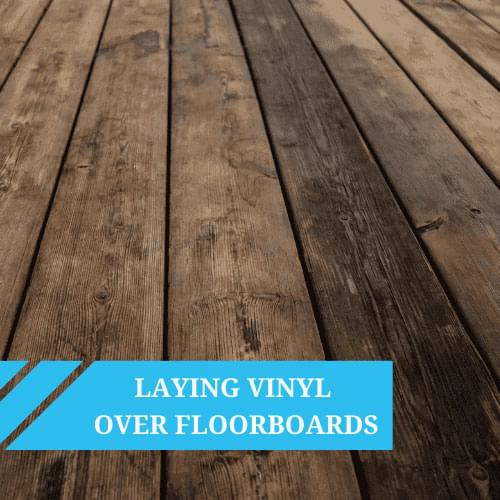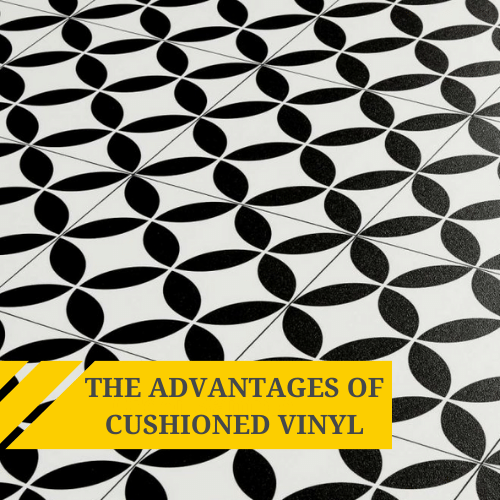We use cookies to make your experience better. To comply with the new e-Privacy directive, we need to ask for your consent to set the cookies. Learn more.
Luxury Vinyl Tiles or Sheet Vinyl?
We’ll show you the differences between sheet and luxury vinyl tiles to help you choose the best option for your home.
Vinyl flooring is a popular choice for many homeowners thanks to its durability, affordability, and easy installation. However, did you know that it comes in more formats other than just large sheets?
In recent years, there has been a growing trend towards luxury vinyl tiles (LVT). These floors offer many of the same advantages as sheet vinyl, but with a few key differences.
Both sheet vinyl and LVT are made from polyvinyl chloride (PVC), a durable and versatile material. However, LVT is made up of individual tiles, while sheet vinyl is a single sheet of material. This difference in construction gives LVT a few advantages over sheet vinyl.
In this blog, we’ll show you the differences between sheet and luxury vinyl tiles to help you choose the best option for your home.


Sheet Vinyl Vs Luxury Vinyl Tile Flooring: What's the Difference?
There are a few differences between vinyl sheet flooring and luxury vinyl flooring tiles. Let’s look at some of the main ones to be aware of.
Construction
As the name suggests, sheet vinyl is a single sheet of vinyl that is installed in one piece. It is supplied by the rolls, and typically made up of four layers. These include a backing, wear layer, a design layer, and a finish layer. The backing layer provides support and helps to protect the floor from moisture, while the wear layer is located at the top and protects the floor from wear and tear. The design layer gives the vinyl its appearance, while the finish layer is a clear coat that protects the design layer from scratches and other damage.
Luxury vinyl tile comprises individual tiles or planks that are installed, like laminate, ceramic, or porcelain tile. They, too, are made up of layers, including a core, wear layer, design layer, and protective layer. The core is the foundation of the tile and provides support and stability. The wear layer protects it from wear and tear, while the design layer gives the tile its realistic wood or stone appearance.
There is also a newer type of LVT flooring known as rigid core flooring. Take a look at our Rigid Vinyl Flooring Comparison to see how they compare.


Appearance
Both sheet vinyl and luxury vinyl tiles are available in various colours and designs. However, out of the two, luxury vinyl flooring tends to have the most realistic appearance. This is down to its individual tile construction and hyper-realistic design layer.
So, if you're looking for stylish vinyl flooring, you may opt for LVT rather than sheet. That said, modern sheet vinyl floors benefit from a realistic look and texture and no longer have that cheap, tacky look they once had.
Water and Heat Resistance
Sheet vinyl is typically coated with a polyurethane finish. This finish makes it water-resistant, but it is not fully waterproof. If sheet vinyl is exposed to standing water for an extended period, it can become damaged.
On the other hand, luxury vinyl is made from multiple layers of vinyl that are bonded together. The top layer is typically made from a urethane or acrylic compound. This wear layer makes luxury vinyl waterproof, meaning it can withstand standing water for an extended period without damage.
In addition to being waterproof, luxury vinyl is also more heat-resistant than sheet vinyl. This, again is down to the urethane or acrylic compound.


Care and Cleaning
Sheet vinyl and luxury vinyl are relatively easy to care for and clean. However, if you spill something on sheet vinyl, it is important to clean it up immediately. The longer a spill sits on the vinyl, the more likely it is to damage the finish. If you spill something on luxury vinyl, you may have more time to clean it up before it causes damage.
Durability and Maintenance
Sheet vinyl and luxury vinyl are both durable flooring options, but luxury vinyl is generally considered more durable. It is generally more resistant to scratches, dents, and stains. However, that doesn't mean sheet vinyl won't stand the test of time.
Both floors require a simple daily clean, such as a quick brush or vacuum. They can also be mopped when needed to keep them dirt free.


Installation
Homeowners with basic D.I.Y. skills can install sheet vinyl and luxury vinyl. However, luxury vinyl tends to be the easiest option.
Sheet vinyl is installed using a method called dry-back installation. This method involves applying a layer of adhesive to the subfloor and then laying the sheet vinyl over the adhesive. The vinyl is trimmed to fit the room and installed in one piece. You must ensure the subfloor is adequately prepared and free from imperfections. Check out our handy guide that answers the question Can I Lay Sheet Vinyl Over Floor Boards?
Luxury vinyl can be installed using various methods, including dry-back installation and click installation. Dry-back installation is like the process used for sheet vinyl. Once it has been stuck to the subfloor, it is rolled out and pressed into place. With click installation, the luxury vinyl planks or tiles are snapped together and floated over the subfloor.
Cost
The cost is where sheet vinyl flooring wins over luxury vinyl flooring. It is considered the cheapest flooring option, working out much cheaper than luxury vinyl. However, you do need to factor in the cost of installing the floor and how long it will last compared to LVT flooring. So, if you are on a budget, sheet vinyl is a good option.


Comfort and Sound
Both luxury vinyl and vinyl sheet flooring are comfortable and quiet to walk on. However, sheet vinyl offers a slightly quieter floor due to its cushioned backing. You can purchase underlay for luxury vinyl flooring that can reduce sound if preferred, but you should find it is generally quiet enough without it.
Lifespan
Luxury vinyl has a longer lifespan than sheet vinyl due to its multi-layered construction. On average, sheet vinyl lasts 10 to 20 years with proper care and maintenance. However, it is more susceptible to damage from water and scratches. Luxury vinyl can last 20 to 30 years, with some even offering a lifetime guarantee.
Conclusion
To sum up, sheet vinyl and luxury vinyl are good flooring options. The best choice for you will depend on your individual needs and preferences. If you are looking for durable, water-resistant, and long-lasting flooring, luxury vinyl is the better choice. However, if you are on a budget or need a comfortable and stylish floor, sheet vinyl is a good option.
Ultimately, the choice between sheet and luxury vinyl comes down to what is important to you and how the floor is expected to perform.
Browse our selection of LVT flooring and Sheet vinyl today. If you need a little design inspiration, why not check out our Black and White Vinyl Flooring Ideas.









